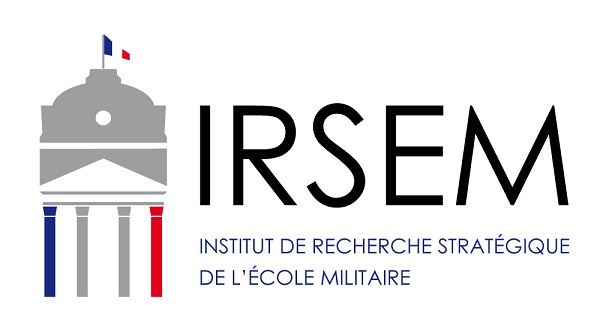Strategy and Tactics: From military to trading
In this article, Clara PINTO (ESSEC Business School, Master in Strategy & Management of International Business (SMIB), 2020-2023) shares her insights as a former military analyst on strategy and tactics applied to trading.
IRSEM: The Institute for Strategic Research at the Military School
Created in 2009, IRSEM is the strategic research institute of the French Ministry of Armed Forces and operates under the supervision of the Directorate General for International Relations and Strategy (DGRIS) operating under the umbrella of the Ministry for the Armed Forces. IRSEM is home to a staff of about forty civilian and military permanent researchers. The Institute seeks to foster the emergence of a new generation of researchers specialized in security and defense issues.
Logo of IRSEM.

Source: IRSEM.
From military to Finance: Strategy and tactics applied to trading
My experience as an analyst in a military Think tank required me to learn the basics of military strategy and tactics. The distinction between strategy and tactics is frequently stated as “strategy is long-term, whereas tactics are short-term.” While the two terms may exhibit similar qualities at times, it is an erroneous and partial explanation of their definitions.
Chinese General Sun Tzu wrote the difference this way: “All the men can see the tactics I use to conquer, but what none can see is the strategy out of which great victory is evolved.”
However, even if strategy and tactics are also used in business, their principles still apply in the trading context. Indeed, successful trading requires a solid understanding of both strategy and tactics. In this article, we will explore the differences between these two concepts and how they can be applied to trading.
Strategy refers to a long-term plan that outlines how you will achieve your trading goals. It involves identifying your objectives, assessing the risks and opportunities in the market, and deciding on a plan of action. A good trading strategy should be flexible enough to adapt to changing market conditions, but also structured enough to provide a clear path forward. One key aspect of a trading strategy is risk management. This involves identifying the potential risks associated with a particular trade and taking steps to mitigate them. This might involve setting stop-loss orders to limit potential losses or diversifying your portfolio to reduce the overall risk. A good trading strategy should also take into account the amount of capital you have available to trade with, as well as your risk tolerance and investment goals.
Tactic, on the other hand, refers to the specific actions you take to implement your trading strategy. These might include analyzing technical indicators to identify trends and patterns to assess the value of a particular asset. A successful trading tactic will depend on a number of factors, including the specific asset you are trading, and the current market conditions.
Ultimately, the success of your trading will depend on how well you are able to combine strategy and tactics. A strong strategy will provide a clear framework for making decisions and managing risk, while effective tactics will allow you to execute that strategy in a way that maximizes your returns. In order to develop a successful trading strategy, it is important to conduct thorough research and analysis of the markets you are interested in. This might involve studying historical market trends, analyzing economic and political factors that could impact the markets, or keeping up to date with news and events that could affect the value of specific assets. It is also important to remember that trading involves a degree of risk, and no strategy or tactic can guarantee success. However, by developing a strong strategy and using effective tactics to execute that strategy, you can improve your chances of making profitable trades over the long term.
In conclusion, strategy and tactics are both essential components of successful trading. A strong trading strategy provides a clear framework for decision-making and risk management, while effective tactics allow you to execute that strategy in a way that maximizes your returns. By combining careful research and analysis with disciplined execution, you can increase your chances of success in the complex and ever-changing world of trading.
Why should I be interested in this post?
Unfortunately, the concepts of strategy and tactics are often mixed up and not entirely understood. However, they provide a good framework to trade in the long term and structure your choices in the decision-making process.
Related posts on the SimTrade blog
Useful resources
IRSEM – The Institute for Strategic Research
About the author
The article was written in March 2023 by Clara PINTO (ESSEC Business School, Master in Strategy & Management of International Business (SMIB), 2022-2023).


Pingback: Market profiles | SimTrade blog
Pingback: Difference between market profiles and volume profiles | SimTrade blog
Pingback: Trading strategies based on market profiles and volume profiles | SimTrade blog